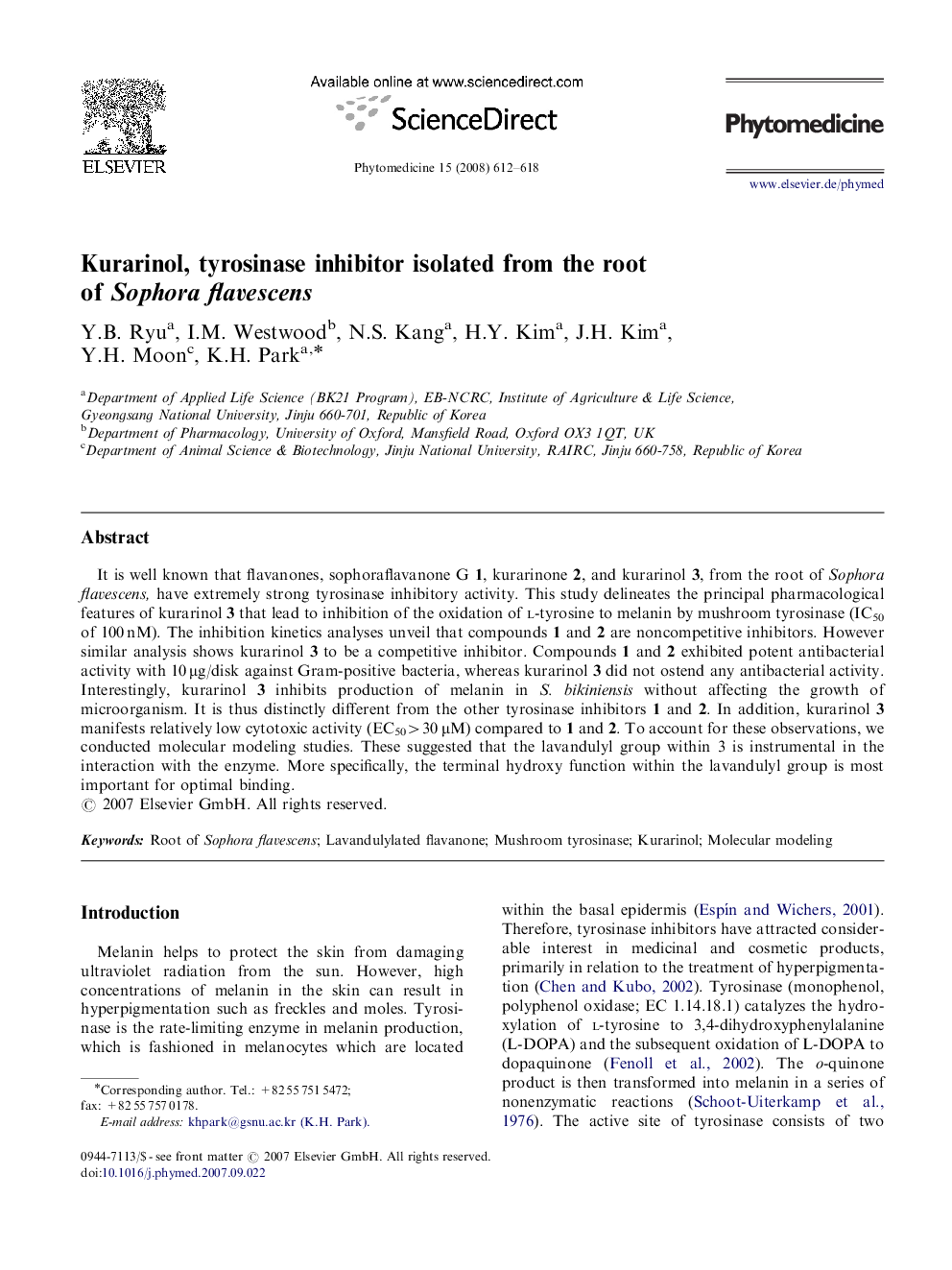| Article ID | Journal | Published Year | Pages | File Type |
|---|---|---|---|---|
| 2497737 | Phytomedicine | 2008 | 7 Pages |
It is well known that flavanones, sophoraflavanone G 1, kurarinone 2, and kurarinol 3, from the root of Sophora flavescens, have extremely strong tyrosinase inhibitory activity. This study delineates the principal pharmacological features of kurarinol 3 that lead to inhibition of the oxidation of l-tyrosine to melanin by mushroom tyrosinase (IC50 of 100 nM). The inhibition kinetics analyses unveil that compounds 1 and 2 are noncompetitive inhibitors. However similar analysis shows kurarinol 3 to be a competitive inhibitor. Compounds 1 and 2 exhibited potent antibacterial activity with 10 μg/disk against Gram-positive bacteria, whereas kurarinol 3 did not ostend any antibacterial activity. Interestingly, kurarinol 3 inhibits production of melanin in S. bikiniensis without affecting the growth of microorganism. It is thus distinctly different from the other tyrosinase inhibitors 1 and 2. In addition, kurarinol 3 manifests relatively low cytotoxic activity (EC50>30 μM) compared to 1 and 2. To account for these observations, we conducted molecular modeling studies. These suggested that the lavandulyl group within 3 is instrumental in the interaction with the enzyme. More specifically, the terminal hydroxy function within the lavandulyl group is most important for optimal binding.
